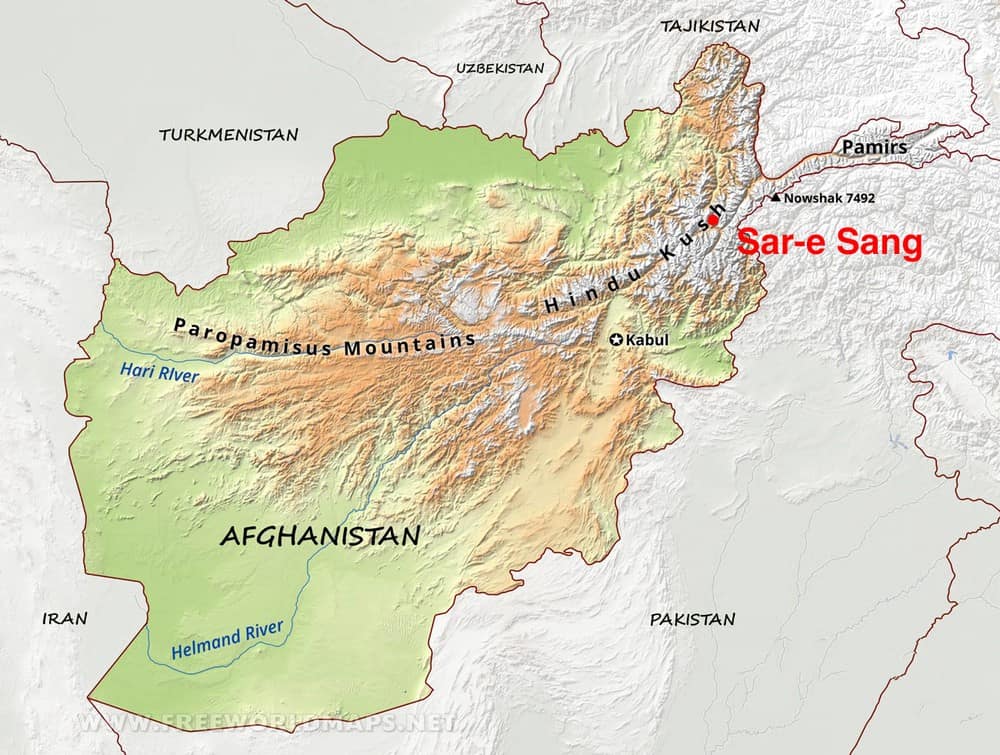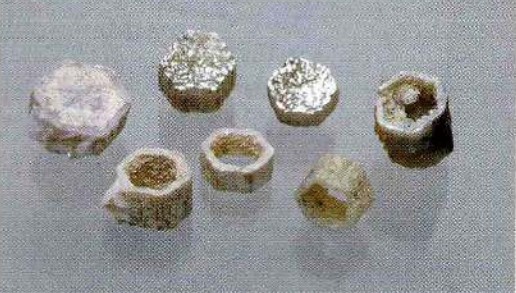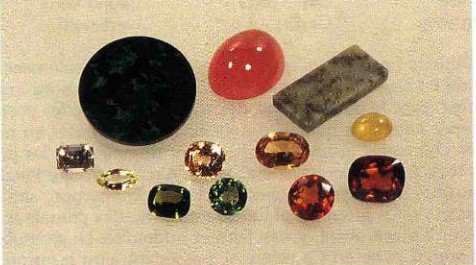
Orange sodalite from Afghanistan
By Dr. M.S. Krzemnicki, first published in Facette 29 (May 2024)

Sodalite, a complex tectosilicate with the ideal formula Na8Al6Si6O24Cl2 is known in the trade mostly as dark blue ornamental material, often as translucent to nearly opaque beads and cabochons, but in rare cases also as transparent faceted stones. Even better known is hackmanite, a tenebrescent variety of sodalite which is characterized by an intriguing but unstable colour shift from greyish to saturated purple when exposed to ultraviolet radiation, but usually fading quickly back to its initial greyish colour (see also Blumentritt & Fritsch 2021).
We thus were quite astonished when a series of faceted sodalites of a very attractive and vivid orange colour and quite important size (up to 28 ct) was submitted to the Swiss Gemmological Institute SSEF for testing. Reportedly, these orange sodalites were recently mined in the Kokcha valley near Sar-e-Sang (Badakkhshan Province) in Afghanistan (Figure 2), famous since ancient times for its lapis lazuli mines (Wyatt et al. 1981; Moore & Woodside 2014).
The identity of these orange sodalites was confirmed by structural (Raman), chemical (EDXRF), and classic gemmological analyses. As is well-known from sodalite (and hackmanite), our samples showed a strong orange fluorescence under longwave ultraviolet and a distinct bluish white fluorescence under shortwave ultraviolet.
Interestingly, some of this material was reportedly more reddish orange when mined, but turned to vivid orange during cutting, thus indicating a slight reversible photochromism (tenebrescence). A colour stability test at SSEF confirmed the photochromic behaviour of part of these orange stones shifting from orange (stable colour) to reddish orange (after activation, unstable colour) and back again to their initial colour after a fading test. Interestingly, this colour shift mainly affected stones of orange colour, whereas sodalites from the same mining site of yellowish to light yellow colour showed nearly no such photochromic shift.
Although sodalite is a rather soft and fragile mineral (Moh’s hardness 51⁄2 to 6), we believe that this new orange sodalite from Afghanistan may become a welcome addition to the gem trade due to its size, quality, and vivid colours.
The interested reader is referred to the coming issue of the Journal of Gemmology (2024, Vol. 39, No. 1) in which a more detailed gemmological short note about this material will be published.

References
Blumentritt, F., Fritsch, E., 2021. Photochromism and photochromic gems: a review and some new data (Part 1). Journal of Gemmology, 37 (8), 780-800.
Moore, T.P., Woodside, R.M.W., 2014. The Sar-e-Sang lapis mines, Kuran wa Munjan district, Badakhshan Province, Afghanistan. Mineralogical Record, 45 (3), 280-336.
Wyatt, J., Bariand, P., Filippi, J. 1981. Lapis-lazuli from Sar-e- Sang, Badakhshan, Afghanistan. Gems & Gemology 17 (4), 184-190.


